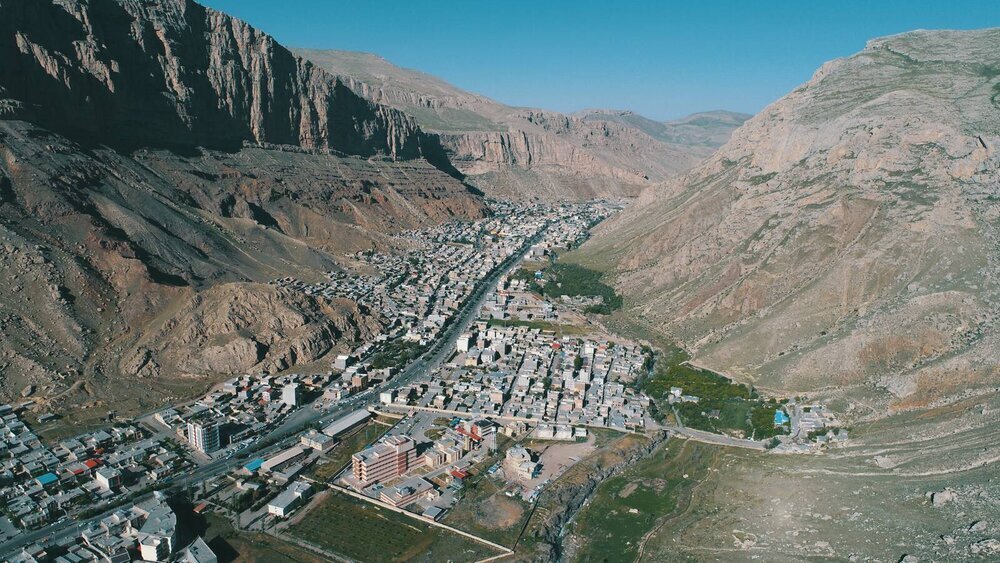Iran’s Maku Free Zone, a connecting link between Asia, Europe

TEHRAN – As Iran’s largest free zone, Maku stands at the juncture between Asia and Europe and has great potential to become a hub for exporting agricultural and foodstuff products from east to west.
Located in Iran’s northwestern province of West Azarbaijan, Maku is one of the seven major free zones of Iran; it has 140 kilometers of shared border with the Azerbaijan Republic and 130 kilometers of border with Turkey.
Maku Free Zone is the connecting point of the East-West and North-South transit corridors and has great potential for expanding trade relations between Iran and Asian countries in one hand and with Europe on the other hand.
“The East-West International Transport Corridor has the capacity to create a framework for a powerful communication network from China to the Baltic and Scandinavian countries, and considering its geographical location, the Maku Free Zone actually plays the role of a four-way land in this route and in China's One Road-One Belt Initiative (BRI),” Head of the Maku Free Zone Organization Hossein Garousi said in a meeting with Chinese businessmen and entrepreneurs in September.
Considering the zone’s strategic position, it can become a commercial, energy and trade hub in the near future.
There are several renewable energy projects underway in this zone which can ensure clean and cheap energy for the development of industrial activities along with the commercial sector, making the zone even more attractive for investment.
“Having logistics, transit, trade, and mining infrastructure, as well as food security and the development of aquatic and agricultural production and the creation of modern gardens are advantages that provide many attractions for this zone, and the neighborhood with Aras River can also provide the conditions for it to become a tourism hub,” Garousi said on Sunday in a meeting with Finish Ambassador to Tehran Kari Kahiluoto.
According to the Garousi, compiling a comprehensive roadmap for the development of the zone and starting business chains in various fields, development of investment and export along with the creation of infrastructures for the further development of logistics, industry and tourism are among the strategic plans that are being pursued for this region.
The ambassador of Finland also pointed to the necessity of expanding cooperation between the two countries and said: “Iran is a friendly and valuable country for us, and the capacities of free zones, especially Maku, can be used for the development of trade ties.”
Earlier this month, a Chinese company signed a memorandum of understanding (MOU) with Iran’s Maku Free Zone Organization to invest $7.0 million in a power plant project to supply electricity for the zone’s startups and IT companies.
According to Garousi, the mentioned MOU is signed in line with the zone’s plans for becoming a smart city, Maku Free Zone portal reported.
“This zone has the necessary hardware and software infrastructure to become a smart city,” Garousi said.
Referring to the Mako Free Zone’s comprehensive plan as the main document for the development of the zone, he added that in this plan, smart logistics is considered as one of the main axes of the development of the zone.
The establishment of free trade zones in Iran dates back to the Iranian calendar year 1368 (March 1989- March 1990) following the fall in the country’s oil income in the preceding year which prompted the government to promote non-oil exports.
The first two free trade zones of Iran were established in the south of the country. The first one was Kish Free Trade Zone established in 1368 on Kish Island in the Persian Gulf and the second one was Qeshm Free Trade Zone established the year after on Qeshm Island in the Strait of Hormuz.
Some five other free trade zones have been also established in the country since then, including Chabahar in southeastern Sistan-Baluchestan Province, Arvand in southwestern Khuzestan Province, Anzali in northern Gilan Province, Aras in East-Azarbaijan Province and Maku in West-Azarbaijan Province, both in the northwest of the country.
Considering the important role that the free zones play in promoting the country’s export and employment, Iran is seriously pursuing the development of its existing zones and the establishment of new zones as well.
More development measures in this field have been taking since the U.S. re-imposition of sanctions on the Iranian economy in November 2018, as Iran is reducing its dependence on the oil income while elevating its domestic production and non-oil exports.
Although the sanctions have disrupted Iran’s economic activities, they could not impede the development of Iranian free zones; in fact, the development of these zones has been even accelerated.
Many strides made for increasing activities in the free zones have played a significant part in boosting the country’s non-oil exports and brought prosperity in the other economic sectors.
EF/MA
